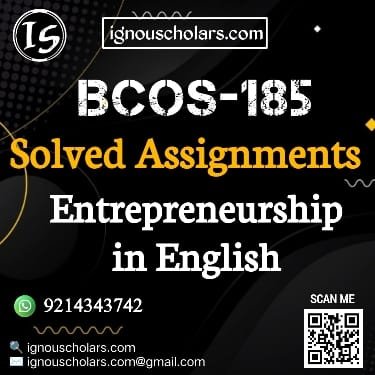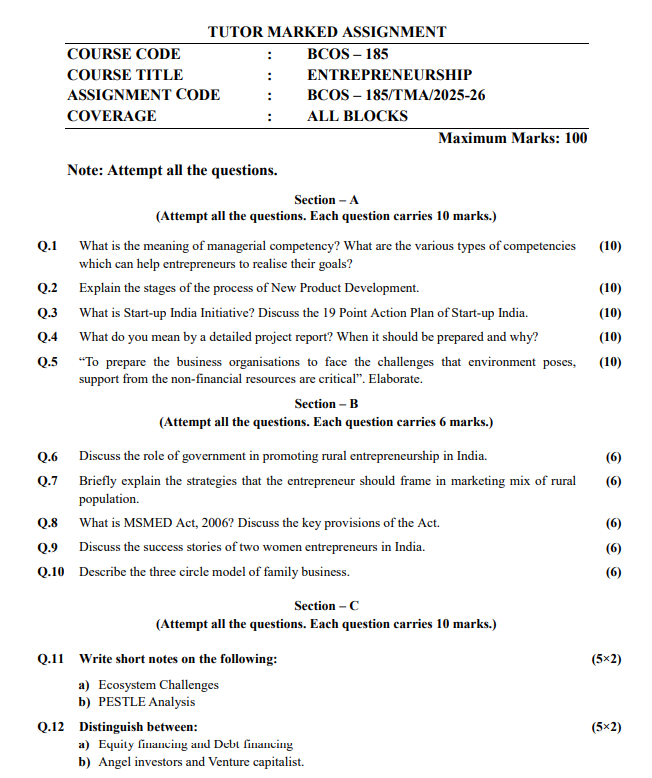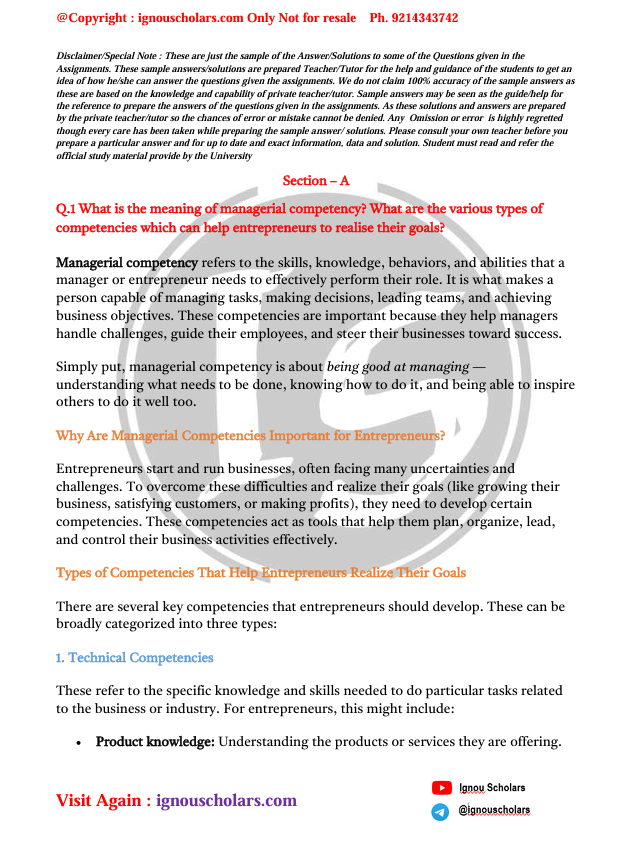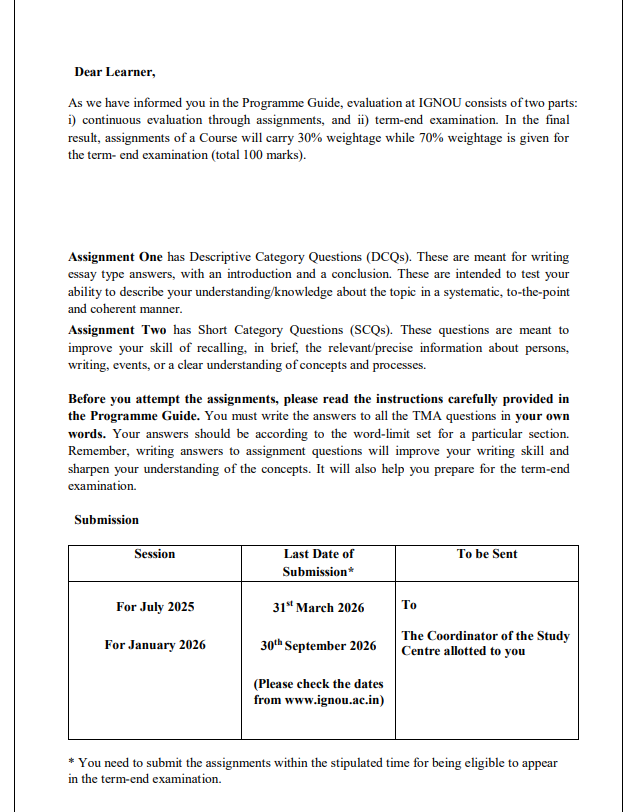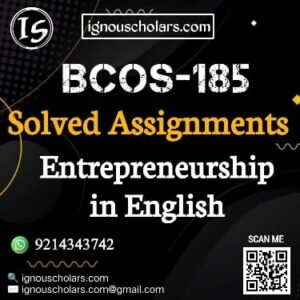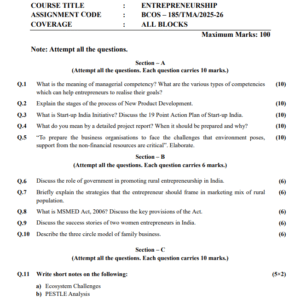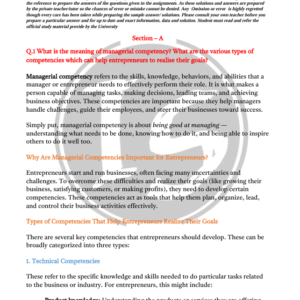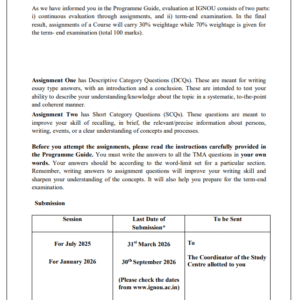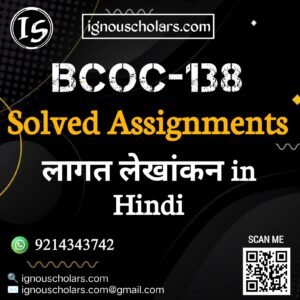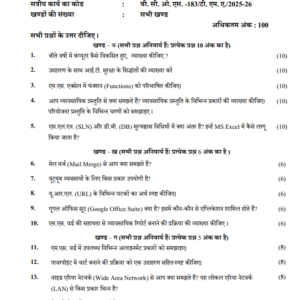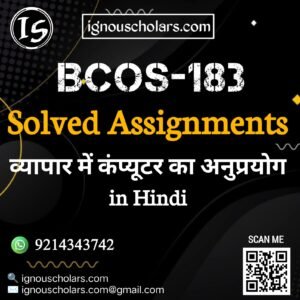Need help? Call us:
+91 9214343742
BCOS-185 : Entrepreneurship in English Solved Assignment 2025-2026
₹100.00 Original price was: ₹100.00.₹30.00Current price is: ₹30.00.
Title : BCOS 185 Entrepreneurship Solved Assignment 2025-2026
Tutor Marked Assignment
Paper Code : BCOS 185
Language : English
Assignment Code : ASST/TMA/2025-2026
Session : Valid for Admission July 2025 and January 2026
Maximum Marks : 100
Have any Questions?
Feel free to Get in touch
BCOS 185 : Entrepreneurship in English Solved Assignment 2025-2026
Title : BCOS 185 : Entrepreneurship in English Solved Assignment 2025-2026
Course Title : Entrepreneurship
Course Code : BCOS 185
Assignment Code : ASST/TMA/2025-2026
Maximum Marks : 100
Title : BCOS 185 :Entrepreneurship in English Solved Assignment 2025-26
Course : CBCS/BCOM
University : IGNOU
Service Type : Soft Copy (Solved Assignments)
Language : English
Product : Solved Assignment of BCOS 185 (IGNOU)
Short Name : BCOS 185
Why Choose Ignou Scholars for Assignments?
- Expert Guidance
IGNOU Scholars often provide expert support with a deep understanding of IGNOU’s syllabus and assignment format. Accurate Solutions
Their assignments are usually well-researched, accurate, and aligned with the university’s requirements.Time-Saving
Preparing assignments from scratch can be time-consuming. IGNOU Scholars help save time by offering ready-to-use or well-structured drafts.Customized Work
Many IGNOU Scholars offer personalized assignments based on your course, subject, and preferences.High-Quality Content
Assignments provided are generally plagiarism-free, well-organized, and written in simple yet effective language.
Section – A (Attempt all the questions. Each question carries 10 marks.)
Q.1 What is the meaning of managerial competency? What are the various types of competencies which can help entrepreneurs to realise their goals?
Q.2 Explain the stages of the process of New Product Development.
Q.3 What is Start-up India Initiative? Discuss the 19 Point Action Plan of Start-up India.
Q.4 What do you mean by a detailed project report? When it should be prepared and why?
Q.5 “To prepare the business organisations to face the challenges that environment poses, support from the non-financial resources are critical”. Elaborate.
Section – B (Attempt all the questions. Each question carries 6 marks.)
Q.6 Discuss the role of government in promoting rural entrepreneurship in India.
Q.7 Briefly explain the strategies that the entrepreneur should frame in marketing mix of rural population.
Q.8 What is MSMED Act, 2006? Discuss the key provisions of the Act.
Q.9 Discuss the success stories of two women entrepreneurs in India.
Q.10 Describe the three circle model of family business.
Section – C (Attempt all the questions. Each question carries 10 marks.)
Q.11 Write short notes on the following:
a) Ecosystem Challenges
b) PESTLE Analysis
Q.12 Distinguish between:
a) Equity financing and Debt financing
b) Angel investors and Venture capitalist.

